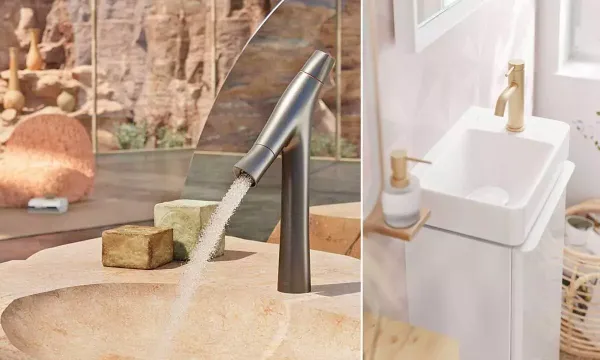
The kitchen and bathroom, two areas at the center of any house, have seen incredible changes throughout the years. These places, which were formerly only used for practical purposes and kept out of the sight of visitors, are now essential to our everyday routines, family get-togethers, and even how we show our individuality and ideals. With their focus on home-centered living, the pandemic years only served to accelerate already-occurring changes, elevating sustainability and health to the top of the design agenda.

“Today’s homeowners seek spaces that do more than merely function—they demand environments that enhance well-being, respect natural resources, and adapt to multifaceted lifestyles,” says Thomas Stopper, Group VP-Asia, Hansgrohe Group. As current WEF data indicates that buildings account for 40% of global energy consumption and domestic water fixtures comprise over 60% of household water use, this change takes place against the background of urgent environmental issues. The industry has reacted to the growing significance of sustainability with innovations that strike a balance between environmental responsibility, performance, and aesthetics.
The kitchen has evolved from a strictly functional area to a vibrant setting where people may cook, socialize, and even work together. This development is being shaped by many important factors:
As people’s awareness of the need to save resources has grown, water-saving fixtures have been included. Modern faucet designs assist in controlling flow while preserving functionality and convenience. Concerns about sustainability are also driving a rise in the use of water-efficient sinks and dishwashing machines. Water-efficient bathroom and kitchen systems are essential, particularly because 25 nations, which house 25% of the world’s population, experience very severe water stress annually, according to the World Resources Institute.
Easy-to-use kitchen layouts are a top priority, with prep spaces, sinks, and faucets positioned intuitively. Modern lives are supported by multipurpose places, such as islands that serve as eating areas or workstations. The positioning of fixtures with careful ergonomics reduces strain and increases productivity in daily chores.
Sustainable, sanitary, and long-lasting materials are becoming more and more important in kitchen design. Longevity and appearance are enhanced by rust-resistant fixtures, easily cleaned counters, and non-porous surfaces that inhibit bacterial development. Furthermore, using materials that are sustainably sourced and recycled fits nicely with the rising environmental consciousness.
Kitchens are becoming more responsive and user-friendly thanks to smart home technologies. App-controlled appliances, temperature-controlled water dispensers, and motion-sensor faucets simplify kitchen chores while increasing water and energy efficiency. The need for sustainable living and smooth interaction in contemporary houses is reflected in these technologies.
More and more contemporary bathrooms are being created with ecological solutions and well-being in mind. A number of themes are influencing bathroom design as leisure and personal cleanliness become more important:
Innovation in bathrooms is fueled by sustainability. Water usage may be decreased without sacrificing comfort thanks to features like thermostatic shower systems, low-flow toilets, and aerated faucets. Modern technologies consume less water while creating a wonderful showering experience by infusing water with air. These developments show a rising dedication to resource conservation.
Space-efficient, simplified designs are growing in popularity, especially for residences in cities. An open, clutter-free aesthetic is produced with frameless glass shower enclosures, floating vanities, and concealed storage. In addition to adding to a streamlined appearance, wall-mounted fixtures increase cleaning effectiveness.
Nowadays, bathrooms are made with people’s health in mind. Features like heated floors, ambient lighting, and rainfall showerheads turn everyday tasks into leisurely experiences. The bathroom becomes a private haven with features like music systems, chromotherapy lighting, and anti-fog mirrors that contribute to the spa-like atmosphere.
Modern bathrooms now place a high premium on hygiene. Self-cleaning surfaces, sensor-based flushing systems, and touchless faucets are becoming more and more popular. Thermostatic mixers provide accurate water temperature control for a more secure and pleasant experience, while smart mirrors with integrated lighting and digital controls provide an extra degree of convenience.
The false contradiction between elegance and sustainability is vanishing as kitchens and bathrooms continue to change. Innovative manufacturers show that resource awareness and a great user experience may complement one another rather than work against one another.
With manufacturing facilities increasingly fueled by renewable energy sources, industry leaders are supporting this strategy with significant R&D expenditures. In the last five years, several European firms have committed over €160 million. This forward-thinking strategy reflects the knowledge that bathrooms and kitchens of the future must strike a balance between short-term human demands and long-term environmental responsibility.